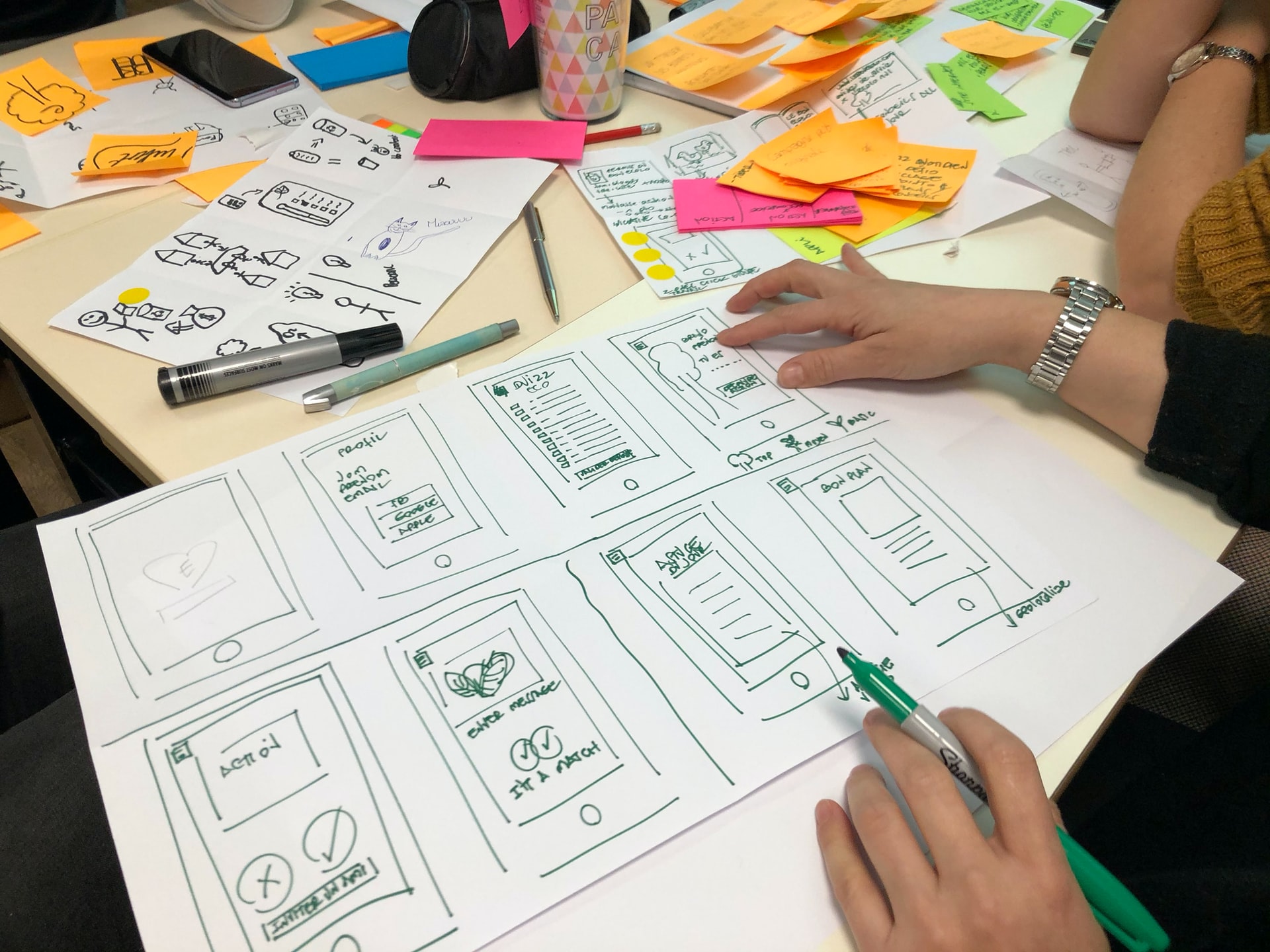Let’s review the three stages of this design thinking framework.
This article is part 3 in a series designed to explore the design thinking process. Click the link here to read through Part 1: What is Design Thinking and Part 2: Attitudes That Hurt Design Thinking & How to Change Them.
In this blog post, we’ll look at a design thinking framework that can be used to help you design innovative solutions to your challenges. We call this simple framework: Challenge, Ideas, and Action. This is based on the three basic thinking stages of the process. From identifying the problem to brainstorming ideas and taking action to solve your problem, this simple framework can be incredibly easy to follow and helpful when you begin planning and implementing your own innovation or design thinking project. So, let’s begin!
Stage 1: Challenge
The Challenge is the initial problem that you want to solve. Challenges can be small everyday things that annoy you, or much larger issues. Either way, they are the spark of the innovation process.
The first step is to truly listen to the frustrations your users and customers are having. You need to communicate with them to find out what problems and needs they have. This stage, therefore, is informed by hearing, listening, and learning from other people with the same problem. Interviews, focus groups, surveys, and other means can help you accomplish this. Learn more about effective communication and practicing empathy in the next article in our design thinking series!
Once you begin to understand the challenge, you might change your questions based on what you’ve learned and refocus in on the main question. In design thinking, you do a lot of this – essentially, zooming in and out to get a better understanding and see the big picture.
The information you collect can be used to develop personas and empathy maps to make connections between the data and “connect the dots.”
Stage 2: Ideas
Once you have a good understanding of your challenge, based on insights from real users, you can move onto the second stage of the design thinking framework: ideas.
There are many ways you can generate ideas. You can work individually, in pairs, on a team, or with a group of users. Pen and paper can be a great way to start. If you find yourself getting stuck, you can consider using tools like scenario mapping or other “idea generating” templates designed specifically to “turn on” your design thinking mindset.
For a guide to some of our favorite ideation and brainstorming methods, refer to part 5 of our design thinking series!
Stage 3: Action
By now you’ve defined your challenge, using feedback from interviews and observations. You’ve brainstormed some ideas and solutions. Now it’s time to put it into action — because Action is the next step of the design thinking framework.
It’s important to note that the goal of the Action phase is not to create the perfect solution to your Challenge. Instead, it’s just about making something that you can show to others. This will not be a final product, but instead a tool for teaching and gaining feedback. It gives you an idea of how users might interact with your solution. With this invaluable feedback, you can take what you learn and use it to inform new and better versions of your solution.
Another important factor is that you shouldn’t spend a lot of time making something that isn’t needed yet. This stage is all about making room for failure in a low-risk, low-investment way. Don’t get too deep into the building process until you know that it’s worth investing more time and work.
For example, if your solution is a mobile app, you don’t need to write a single line of code in order to take action. Instead, you want a low-investment solution that you can validate by assessing if it’s actually what your users need. That might mean sketching out the solution on a notecard, and showing that to users.
Putting together a rough prototype of your ideas can benefit your process in a number of ways. For one, it can help you get more ideas. Even a rough prototype can help you have better conversations with the user you’re designing for, since you have something you can show to the user. It enables users to actually point to what you’re designing, to get their hands on it and say, “Hey, maybe try this instead.” This is part of the reason you want to make this prototype rough and rapid: It’s almost guaranteed to change once it’s been brought into the world.
Conclusion: Putting the Design Thinking Framework Together
By now, you understand the basics of the three stages of this design thinking framework: Challenge, Ideas, and Action. These three stages can help you welcome ideas and solutions that bring value to your organization and even your personal life. For more resources and tips about design thinking, continue reading our blog. Want help creating a design thinking workshop or training session? Contact us online to get started or click to explore our design thinking training or innovation workshops.
